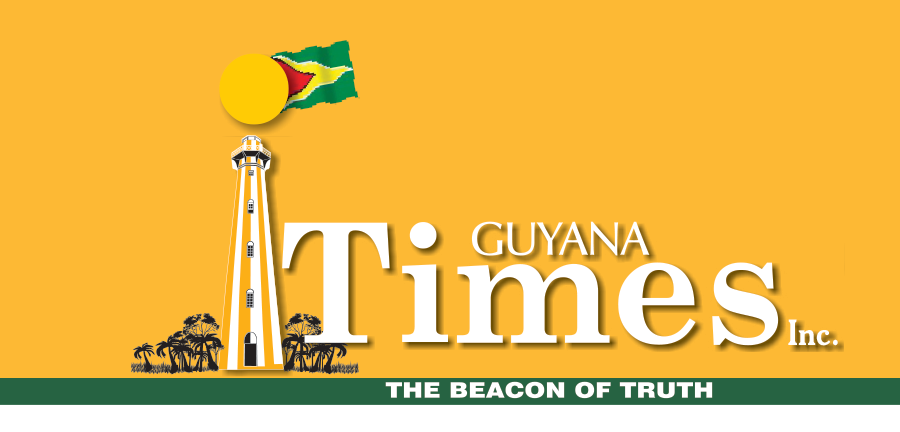Since August 2020, under President Irfaan Ali, with transformations becoming routine, one of the transformations that has not gotten much attention is the transformation in health technology.
By June 20th, a new CT will be functional at the New Amsterdam Hospital (NAH). The new CT was acquired at a cost of about $US1M. The people of Berbice will no longer have to travel to Georgetown for high-quality CT in the public sector. As of June 20th, they will have access to the highest-quality CT examinations available in Guyana and the Caribbean right at the NAH. Indeed, one can expect that doctors, particularly cardiologists, neurologists, nephrologists, urologists and oncologists from both the public and private sector will want to send patients for advance-technology CT at the NAH.
The new CT is a 128-slice CT. The more slices a CT can examine simultaneously tells how sensitive and accurate the CT is. The new CT replaces an old, obsolete 2-slice CT which was installed at the NAH in 2017. The old CT was donated to the NAH by an NGO from the US, RadAID. The old CT stopped working since early last year and could not be repaired since parts were no longer available. Representation was made to President Irfaan Ali and he without hesitation agreed to find resources to procure the new CT.
This is not the first 128-slice CT in Guyana or the Caribbean. Trinidad and Tobago acquired a 128-slice CT in 2021 and the Balwant Singh Hospital in Guyana acquired a 128-slice CT in 2022. I had accompanied President Irfaan Ali as he commissioned this CT at the Balwant Singh Hospital in 2022. Several hospitals in Brazil also have 128-slice CT. We should note that GPHC and three private hospitals in Guyana have 64 slice CTs.
The 128-slice CT at the NAH, however, is the most advanced 128-slice CT and the only of its kind at this time in Guyana and in the Caribbean. In fact, even Brazil does not at this time have access to the technology that the new CT at the NAH brings. While offering advanced diagnostic capacity, particularly for the cardiologists, neurologists and oncologists, it lowers radiation doses by 80%. Its advanced AI applications will allow doctors to reconstruct images and will conduct automatic repositioning of patients, and shortening examination times.
The public sector first CT was at GPHC in 2016 and people had to pay a fee for the CT. But CT is free in the public sector since the start of 2024. The new Diamond Hospital which was commissioned on Sunday June 8 has a 64-slice CT, a sister CT to the new one at the New Amsterdam Hospital. Soon the Enmore, Bath, #75, DeKindren and Lima Regional Hospitals will also be commissioned with similar 64-slice CTs as the one at Diamond. This will mean that six more CTs will be available to improve diagnostics for patients along the coast.
But new and upgraded hospitals at West Demerara, Lethem, Moruca, Kamarang, Kato, Bartica and Linden will also have CTs installed, meaning that people in all ten Regions in Guyana will have access to high-quality CTs by 2027. Guyana will be the first developing country which will have free universal access to CT diagnostics. In fact, there is only a handful of developed countries in the world that would be able to say they match Guyana with free universal access to high quality CTs by 2027.
GPHC is investing more than $US10M in significantly adding new technologies to help in expanding and improving diagnostics. Among the new technologies that the GPHC is adding to its rapidly advancing technologies is a new MRI, the first in the public sector. The 1.5 tesla MRI which should be functional at GPHC by October will be the most advanced MRI in Guyana and in CARICOM. This will greatly improve diagnostics for cardiologists, neurologists, oncologists, nephrologists, respiratory-specialists and other specialist areas.
But the $US10M investment will also add another powerful CT, mammography equipment and new Cath-Lab for cardiology. Already, the radiology department at GPHC has replaced all its old-fashioned analog X-rays with powerful digital X-Ray machines. The Ministry of Health has already also replaced many of the old-fashioned analog X-Ray machines in the country with digital X-Rays. By the end of 2025, all X-Rays in use in the public sector will be digital X-Ray machines.
While there are presently only four mammography machines working in the public sector, two more will be added at GPHC by end of 2025 and it is expected that all public sector hospitals will offer high-quality mammography services by 2030.
Recently, four new panoramic dental X-rays were procured for the public sector. The first panoramic dental x-ray machine was introduced at the Cheddi Jagan Dental Center in 2003. But by 2016 it was out of operation and never replaced. In late 2024 a high-quality digitalized panoramic system was procured for the CJDC in Georgetown and three others were procured for the public sector.
Together with new ultrasound machines in many of the public sector hospitals, a total transformation of radiology and imaging diagnostics has taken place and continues to be strengthened. That all of this has happened in just about five years is a remarkable story and must be told. It is not just that new technology is transforming radiology and imaging diagnostics in Guyana, but that Guyanese has access to better radiology services for free. No other developing country comes close to this achievement. More remarkable is that few, if any, developed country can say the same.
While Ruminations focused the technology transformation in the public health sector on radiology and imaging diagnostics, such health technology is taking place across the sector. The Irfaan Ali, Frank Anthony-led MOH has radically transformed health technology in the public health sector in just five years. And yet the health technology story in Guyana has only just begun.
Discover more from Guyana Times
Subscribe to get the latest posts sent to your email.











